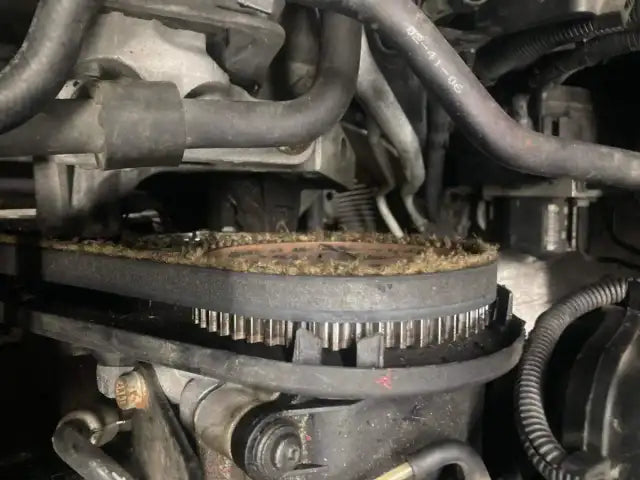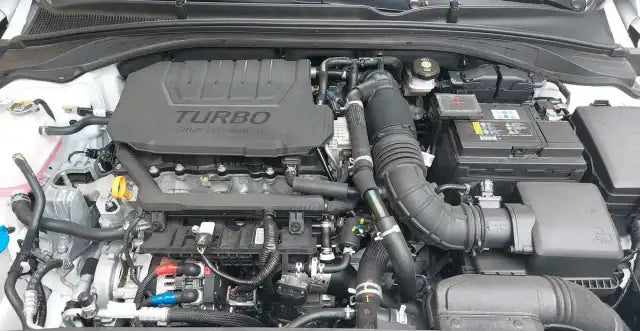The timing system is a crucial component of the engine that regulates the flow of air into the engine's cylinders and the expulsion of exhaust gases. Failures within this system can be a nightmare for any driver, as they tend to be serious and costly to fix. How can you avoid potential issues with this system? The answer lies in regular maintenance and promptly addressing any signs of wear. But what are the indicators that a timing mechanism needs replacing?
Symptoms of a failing timing system – a bad sign for any driver
The timing system is a complex and vital component crucial for the smooth operation of the engine. Due to its intricate design and critical role, any malfunctions within this system pose a significant threat to the entire engine. As is commonly understood, the more worn the timing components, the greater the risk of engine failure. Thus, any signs of wear in the timing system should not be ignored – failure to address these issues could lead to catastrophic engine damage, which, as one might guess, can result in substantial costs – often exceeding the value of the car itself.
Symptoms of timing system replacement – key indicators
Let's dive into the core of the topic: the symptoms of timing system wear, though it's important to note that these can vary depending on the type of timing mechanism used. Signs that a timing system, particularly one using a chain, needs replacing can be quite evident. First and foremost, a stretched chain may trigger the check engine light. But that's not all – typical signs of a worn timing system include:
- loud noises from the timing area,
- chain rubbing against the housing,
- uneven engine operation, often with chain slipping,
- starting issues,
- rattling noises under the hood,
- misfires,
- oil leaks from the front of the engine.
Do timing systems always show signs before needing service?
Having addressed how to identify a timing system that needs replacing, let's explore another question: Do symptoms of a failing timing system always appear in advance? It's crucial to understand that symptoms of wear may not always be present, particularly with belts. In these cases, the belt may simply snap without any prior warning noises. The instant of the belt snapping is marked by immediate problems with engine compression. If the belt in your vehicle breaks, do not attempt to start the engine, as this can lead to severe engine damage. However, it's important to mention that there might be subtle signs with a belt as well: uneven engine operation upon startup and a noticeable jolt when shutting off the engine can be early signs of belt wear. These phenomena should be treated as indicators of a worn belt.
How to visually identify a timing system that needs replacing?
The challenge with timing systems is that their appearance doesn’t change much during use, making it difficult to assess wear based solely on visual inspection. However, there is one approach you can take, particularly with timing belts. In most cases, the cover includes a small inspection cap that can be removed without dismantling other parts. After removing this cap, you can check if the belt still has all its teeth intact – if not, it's a clear sign that the belt needs to be replaced. If ignored, this could lead to the belt snapping or other serious system failures.
How to avoid premature wear of the timing system?
Timing system failures often stem from the wear and tear of its components, including the belt, valve stems, or valve springs. While we can't completely halt their degradation, there are several preventative measures to extend their lifespan. Proper vehicle maintenance, regular system care, and using services from reputable workshops can bring many benefits and prevent severe breakdowns. Additionally, ensuring the use of high-quality engine oil is crucial. Regular checks and replacements help maintain the timing system's integrity and overall engine health, warding off premature wear and costly repairs.
Valve lifters and the condition of the timing system
Speaking of the timing system, it's important to consider components that control the valves, particularly the lifters, which are responsible for adjusting valve clearance. Over time, however, the clearance may change – particularly undesirable is when the clearance is too large, accelerating the wear of the valves and other system components. Worn lifters will make themselves known by a noise resembling knocking. Importantly, this symptom does not necessarily indicate damage – it could also signal that they require maintenance.
Flushing the unit – a method that can prevent major system damage
How can you care for the state of the lifters and, by extension, the rest of the timing system? A good practice is to regularly flush the engine using a suitable product. TEC 2000 Engine Flush, which you can purchase on our website, enjoys great popularity among mechanics and drivers in Poland. This chemical product, based on strong solvents, effectively deals with contaminants found in valve lifters, pistons, or the oil manifold. It enhances the performance of the lifters (tappets) and extends their lifespan. A can costs a few dozen zlotys, which, compared to potential timing system failures, is really a small expense.





Leave a comment
This site is protected by hCaptcha and the hCaptcha Privacy Policy and Terms of Service apply.